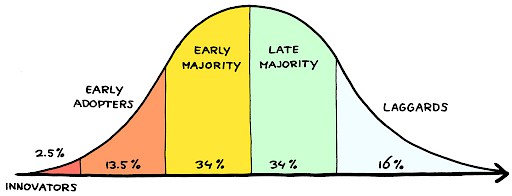Digital Transformation or Digital Shift?
By Mike Raia ![]() | Published October 30, 2017
| Published October 30, 2017
What's Different Now?
It's hard to check a business-related Twitter feed or LinkedIn stream without running across the phrase "digital transformation." While the concept isn't new, it seems to be accelerating. Many definitions exist for digital transformation. Here's one from InfoWorld that's as good as any:
"Digital transformation is the application of digital technologies to fundamentally impact all aspects of business and society."
Perhaps a better name for digital transformation is "digital shift." "Transformation" implies a finished state, as when a seed becomes a tree or a block of marble becomes a sculpture. A truly innovative company continually addresses how it operates and how it can better meet both customer expectations and external threats. Given the pace of technological change more often than not these expectations and threats are generated from new, disruptive technology.
Embracing Innovation
To truly become an organization that embraces an innovative and digital way of working, the company culture must operate differently. This operational shift is not just about technology, rather it must become a mind shift. Technology can certainly play an important role, but focusing on technology exclusively can lead organizations down a dead end where the chosen technology leads decision-making rather than the humans.
In addition, bringing in a potpourri of software and new skills is not going to transform the way you do business if people in your organization are just going through the motions. Software is just a tool. Hand a hammer to a dog and he will probably bury it. Hand a shiny new piece of software to an unmotivated, disengaged employee and they'll bury it as well.

Spreading Innovation Internally
So how do you empower employees to be part of the digital shift?
- Give the Big Picture (Better customer experience? Shorter time to market? Game-changing product?)
- Build transparent, interdisciplinary teams (Silos must break down)
- Set goals and plan to fail quickly (Let teams set goals)
- Provide tools and data (Give teams what they need)
- Trust and lead from a distance (Don't walk away, just step back)
Additionally, allow employees the flexibility to innovate and give them a good way to share ideas.
Once the digital shift begins to take hold, you'll find employees thinking about better ways to do things in the new digital-first world, but also in the real world. The mindset becomes "Can we do this better?" There may not always be a digital answer but just thinking about it in new terms can generate practical, successful solutions.
Tags
Ideas digital transformation
Categories
Business Ideas Workflow Ideas

Mike Raia
Marketing the world's best workflow automation software and drinking way too much coffee. Connect with me on LinkedIn at https://www.linkedin.com/in/michaelraia/
